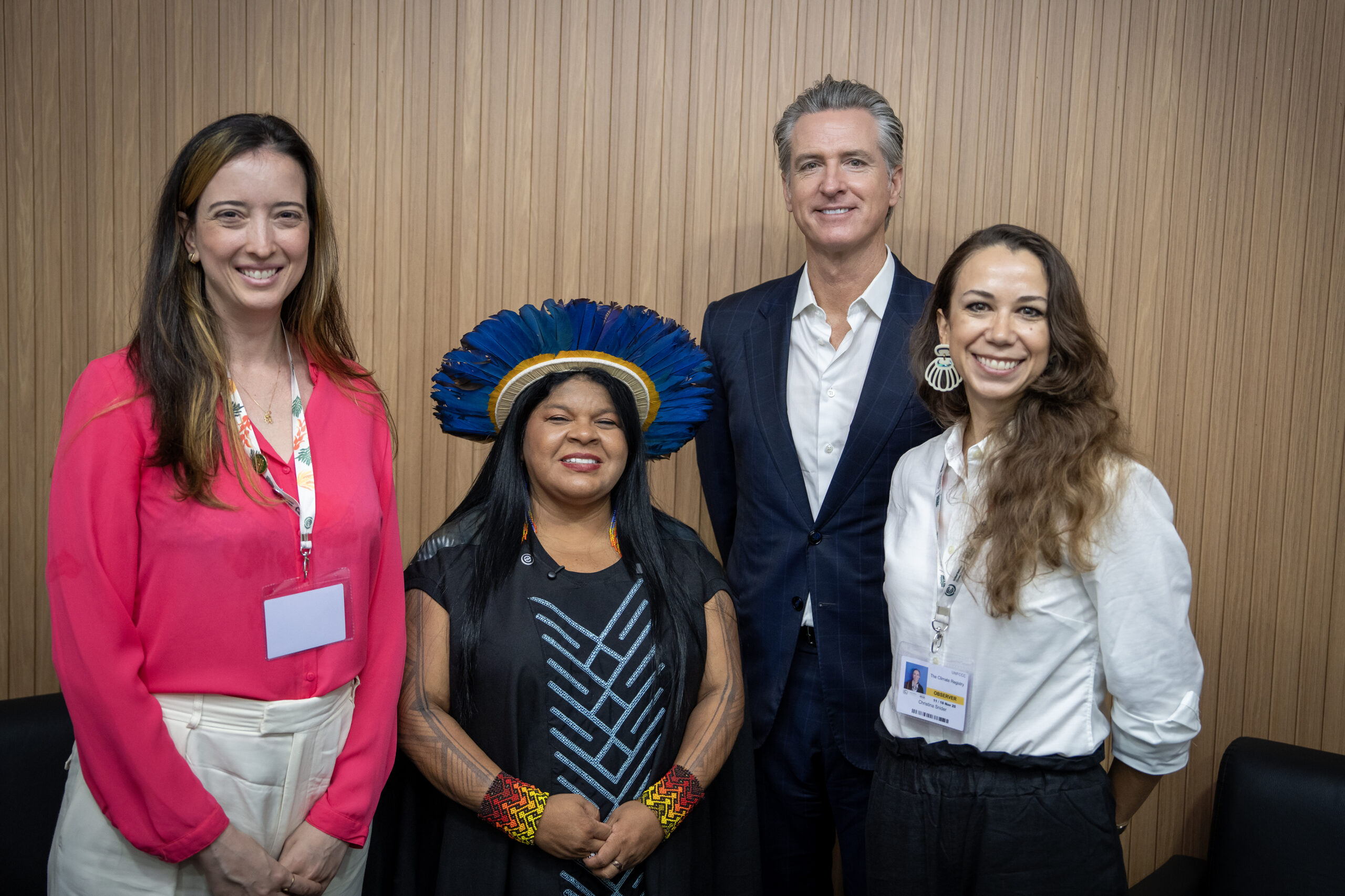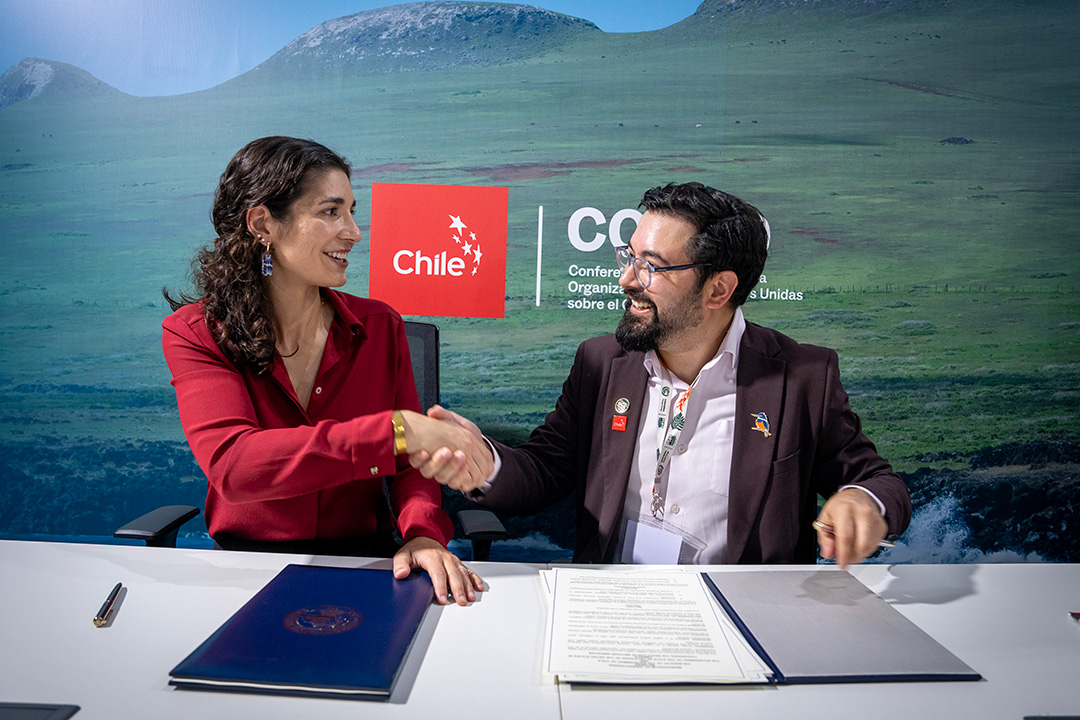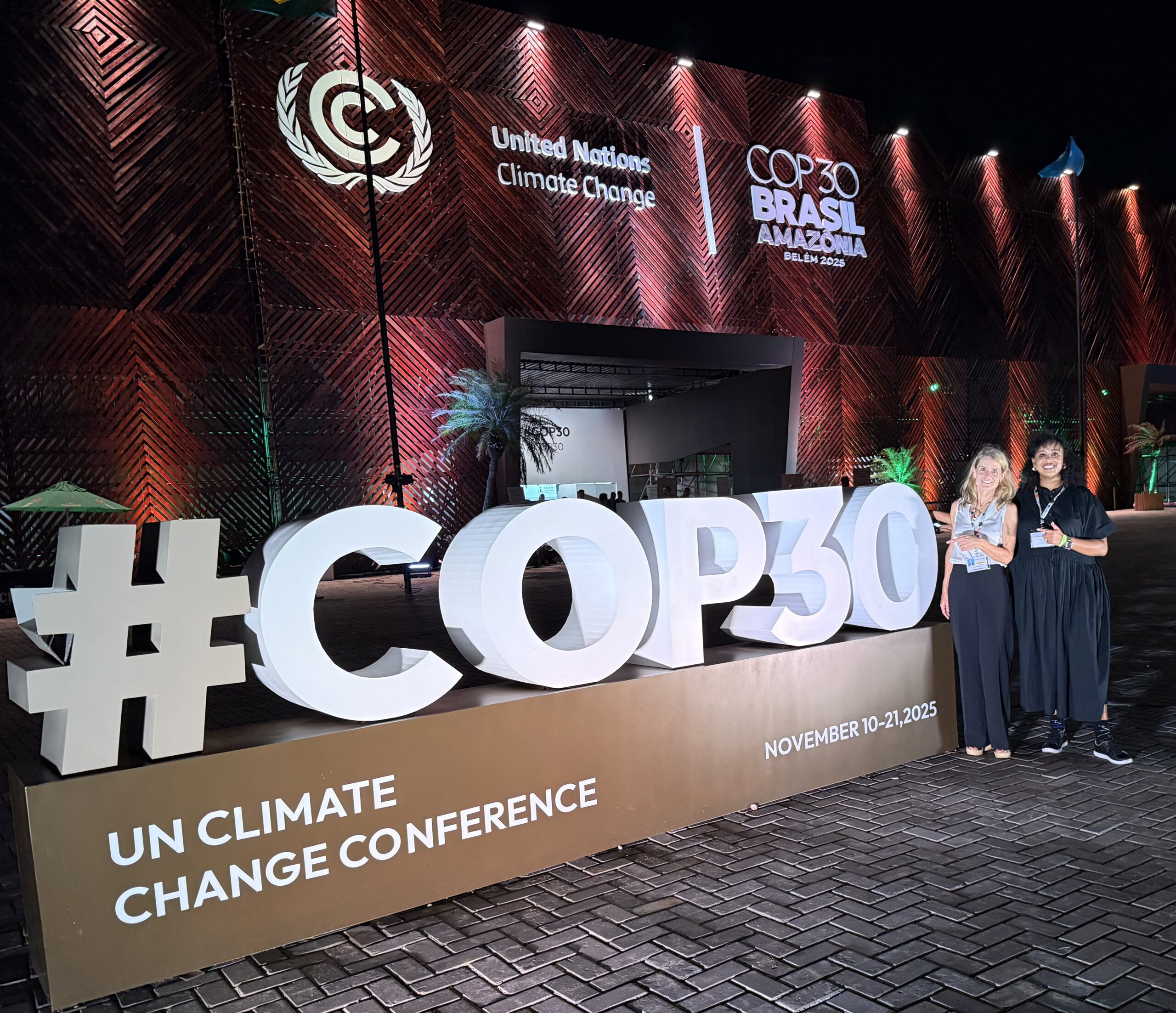California delegation wraps historic participation at COP30: new global partnerships, clean energy records, and climate leadership
What you need to know: California delegation wraps historic participation at COP30: new global partnerships, clean energy records, and climate leadership
SACRAMENTO — Governor Gavin Newsom’s administration wrapped up a landmark trip to Brazil for the UN Climate Change Conference (COP30) where California stepped into the U.S. leadership void left by the Trump administration. Over the course of the conference, the Governor and California’s delegation forged strategic partnerships across three continents, announced breakthrough clean energy achievements, and elevated Indigenous voices and subnational leadership on the world stage.
While the Trump administration refused to even send a notetaker — let alone a delegation — to Brazil, California’s delegation showed up, representing the U.S. Climate Alliance and America is All In coalitions, meeting with world leaders, inking new partnerships, and proving that climate action, economic prosperity, and the health of our planet are a win-win-win.
While the Trump administration stayed home, California brought a delegation of experts and leaders to COP30 who showed the world what real American leadership looks like. We formed new international partnerships that will make California stronger economically, environmentally, and as a global climate leader.
Governor Gavin Newsom

Governor Gavin Newsom and California Tribal Affairs Secretary Christina Snider-Ashtari met with Brazil’s Minister of Indigenous Peoples, Sonia Guajajara, and Chief of Cabinet to the Minister Carla Varea Guareschi to discuss areas of joint cooperation on climate action, including the role of Indigenous communities in California and Brazil.
Building Indigenous partnerships across continents
With this year’s COP highlighting the leadership of Indigenous peoples as the guardians of biodiversity, California’s first Indigenous Tribal Affairs Secretary, Christina Snider-Ashtari, engaged in focused discussions with Sônia Guajajara, Brazil’s first Indigenous Minister of Indigenous Peoples, and Francisca Arara, the State of Acre’s first Indigenous Secretary for Indigenous Peoples, to share approaches to advancing Indigenous climate solutions and set the stage for future international collaboration across Indigenous communities and cultures.
“California Native peoples have stewarded our lands and waters since time immemorial, and we will continue that work regardless of shifts in political winds,” said Secretary Snider-Ashtari. “California remains committed to Native-led climate action, clean energy, and community resilience, and we look forward to advancing this work in collaboration with our Indigenous counterparts across the globe.”
Secretary Snider-Ashtari also met with private sector and subnational policymakers to share California’s nation-leading approach to tribal-state climate partnerships through engaging in ongoing government-to-government consultation, creating tribal-specific climate action funding streams and dismantling harmful historical legacies preventing tribal nations from engaging in tried and true ancestral land management practices.
During COP30, Governor Newsom traveled into the Amazon River Basin to meet with Indigenous leaders in Jamaraquá, a small community of 47 families, to discuss how partnerships between Indigenous communities can drive conservation and strengthen the global climate response.

California Air Resources Board Chair Lauren Sanchez and Nigeria’s Director General of the National Council on Climate Change Tenioye Majekodunmi. (left)
Advancing clean transportation across continents
In Belém, Governor Newsom witnessed the signing of an MOU between California and Nigeria, marking another bold step forward in the Golden State’s global work to advance clean energy, climate resilience, and sustainable transportation. Weeks earlier, the State of California signed an MOU with the Republic of Kenya at Climate Week NYC 2025.
“California is honored to join hands with Nigeria, Kenya and all nations committed to climate action and clean mobility,” said California Transportation Secretary Toks Omishakin. “Guided by Governor Newsom’s bold climate and economic vision, these historic partnerships reflect our shared commitments to sustainable growth, advancing zero-emission transportation and opportunities for the next generation.”
Nigeria is Africa’s most populous country, and Kenya is often referred to as the ‘Silicon Savannah’ and the Gateway to East Africa. Both nations are regarded as African leaders in innovation, clean mobility, digital technology, and creative industries — areas well aligned with California’s economy, climate policies, and innovation. Both MOUs focus on key areas of cooperation, including sustainable urban transportation, green ports, low-carbon fuels and academic exchange. They demonstrate our joint commitment to cleaner, more connected communities and advancing the global transition to zero-emission transportation.

California Natural Resources Secretary Wade Crowfoot speaking with Wisconsin Governor Tony Evers and New Mexico Governor Michelle Lujan Grisham at the Local Leaders Forum in Rio de Janeiro.
Leading subnational climate coalitions and engagements
In Rio de Janeiro, the California Natural Resources Agency participated in the COP30 Local Leaders Forum — co-chaired by Governor Newsom — where subnational leaders from around the globe showcased their contributions to global climate change goals negotiated at the COP, learned from one another, and explored how we can move faster together. Secretary Wade Crowfoot met with leaders from around the world who expressed how California is helping their governments address a broad range of climate challenges – and vice versa. This meeting of local leaders has become a key part of the UN climate conferences as the conversation continues to shift from setting big goals to actually implementing them.
“With the federal government totally missing in action, the rest of the world needs to understand that America is still in this climate fight, and we’re moving forward,” said California Natural Resources Secretary Wade Crowfoot. “Our brand of federalism invests real authority in our states – and no single president can erase that. We were proud to be part of a coalition of states that brought that message to Brazil for the rest of the world to hear.”
Secretary Crowfoot also participated in several convenings of coalitions that the state helps lead, including the Under2 Coalition and America Is All In, and the U.S. Climate Alliance.
Key highlights:
-
Under2 Coalition Anniversary: California and Baden-Württemberg, co-founders of the Under2 Coalition, signed a joint statement celebrating ten years of partnership. The coalition now represents more than 270 governments committed to keeping global temperature rise under 2 degrees Celsius.
- Pará Partnership: Governor Newsom signed an MOU with the State of Pará, Brazil to strengthen cooperation on wildfire prevention and response — enhancing forest monitoring and sharing firefighting expertise.
- Colombia Partnership: California and Colombia signed an MOU to advance forest conservation, methane reduction, climate resilience, and clean energy development — deepening coordination on protecting the Amazon and strengthening biodiversity.

California Air Resources Board Chair Lauren Sanchez and Chile’s Undersecretary for the Environment, Maximiliano Proaño signing a new MOU on methane.
Science-driven solutions and global cooperation
Ahead of COP30, the California Environmental Protection Agency (CalEPA) played a leading role in coordinating interagency efforts and negotiating partnerships with several countries and subnational governments to cut pollution, reduce emissions, and share innovative technology and resources to build climate resilience for at-risk communities.
California and Chile signed an MOU that will help both governments develop best practices for methane detection and abatement. Methane is the second-largest source of human-caused greenhouse gas emissions with a warming impact up to 80 times greater than carbon dioxide, and reducing it is critical to reaching our climate goals. Methane remains in the atmosphere for about a decade, which has two important implications: most damage occurs relatively quickly, and reducing those emissions will more quickly slow rising global temperatures.
“The partnerships we forged with governments around the world during COP30 show how California consistently picks up the ball and keeps moving forward when the U.S. federal government chooses to sit on the sidelines,” said California Environmental Protection Agency Secretary Yana Garcia. Governor Newsom’s leadership in the fight against climate change keeps California on the cutting edge of cleaner and more affordable innovation, at a global scale. CalEPA looks forward to strengthening ties further with our international partners as we get to work.”
During the global conference, Governor Newsom announced that California’s data from a new specialized methane-detecting satellite has already helped resolve 10 large methane leaks at oil and gas facilities across California since May — cutting pollution equivalent to taking 18,000 cars off the road for a year. The leaks are detected by cutting-edge sensors on the Tanager-1 satellite and tracked on the California Air Resources Board’s (CARB) dashboard. The breakthrough comes as the Trump administration proposes to end the EPA’s Greenhouse Gas Reporting Program.
“California again showed the world it is committed to the fight against climate change,” said California Air Resources Board Chair Lauren Sanchez. As the federal government abandons global partnerships and turns a blind eye to science and facts, CARB continues to drive meaningful solutions to reduce harmful emissions and clean the air we all breathe. This year’s COP reminded us that we aren’t alone in this work— together with our international partners, we can create a future that is healthier, more resilient, and more sustainable for communities around the world.”

CPUC President Alice Reynolds and Leuwam Tesfai, CPUC Deputy Executive Director for Energy and Climate Policy, at the COP30 sign. (Left to right)
Driving grid modernization and clean energy deployment leadership
California Public Utilities Commission President Alice Reynolds represented California throughout COP30, participating in panels on accelerating clean energy deployment, reducing methane emissions through satellite technology, managing AI power demand, and at the Beyond Oil and Gas Alliance Ministerial. She highlighted how California’s emissions have declined even as the state’s economy has grown, with electric-sector emissions down more than 40 percent since 2006.
“Coming out of COP30, it is clear that we are facing a defining moment for the planet. And California is stepping up to the urgency that the pressing issue of climate change demands,” said CPUC President Alice Reynolds. “We’re innovating, collaborating, and investing to cut emissions, protect our communities, and build a clean-energy economy that works for everyone. The world is looking for courageous action and leadership, and California is all in.”
At COP30, Governor Newsom announced that California has reached nearly 17,000 megawatts of battery storage capacity — data from the California Energy Commission showing a 2,100% surge since Governor Newsom took office in 2019. California has now built one-third of the storage capacity estimated to be needed by 2045 to reach its clean energy goals.

California’s agricultural delegation meets with UN Food and Agriculture Organization leadership at COP30. Left to right: Sarah Swig, Deputy Cabinet Secretary to Governor Newsom; Secretary Karen Ross, California Department of Food and Agriculture; Kaveh Zahedi, FAO Director of the Office of Climate Change; Virginia Jameson, CDFA Deputy Secretary of Climate and Working Lands; and Martial Bernoux, FAO Climate Change Team Leader.
Climate-smart agriculture and sustainable food systems
California Department of Food and Agriculture (CDFA) Secretary Karen Ross represented California’s agricultural innovation at COP30, participating in panels and bilateral meetings that showcased how the state has integrated climate action with food security. Secretary Ross strengthened existing partnerships and forged new collaborations on climate-smart, resilient, and regenerative agriculture.
“Of the four COPs I’ve attended, this was the strongest focus yet on the essential role of farmers and sustainable food systems—not only in reducing greenhouse gas emissions but also in delivering solutions through healthy soils, biodiversity, and carbon sequestration,” said California Department of Food and Agriculture, Secretary Karen Ross. “It was powerful to see programming that integrated climate, agriculture, water, and biodiversity as a holistic approach to the challenges and opportunities agriculture faces. Thanks to the Governor’s leadership CDFA has distributed approximately $690 million for climate-smart practices, including livestock methane reduction, healthy soils, on-farm water savings, and energy efficiency.”
California’s food and agricultural leadership at COP30 sent a powerful signal that America’s climate work in food security won’t pause or slow. As one of the few Mediterranean climate regions in the world and the nation’s leader in dairy and specialty crops, California produces over 400 crops and supplies three-fourths of the nation’s vegetables, fruits and nuts, and 20 percent of the nation’s milk. In 2023 alone, California agriculture generated $61 billion in sales, accounting for 11 percent of total U.S. agricultural sales and exported $22.4 billion in goods.
California’s agricultural story is one of constant adaptation — facing drought, flooding, rising temperatures, and new pest pressures while continuing to grow food for the world under some of the strongest environmental and labor standards anywhere.
California’s climate leadership
Pollution is down and the economy is up. Greenhouse gas emissions in California are down 21% since 2000 — even as the state’s GDP increased 81% in that same time period, all while becoming the world’s fourth largest economy.
California also continues to set clean energy records. In 2023, the state was powered by two-thirds clean energy, the largest economy in the world to achieve this level. California has also run on 100% clean electricity for part of the day almost every day this year.
Since the beginning of the Newsom Administration, battery storage has surged to nearly 17,000 megawatts — a 2,100%+ increase, and over 30,000 megawatts of new resources have been added to the electric grid. California now has 33 percent of the storage capacity estimated to be needed by 2045 to reach 100 percent clean electricity.
California at COP30
COP30 is an annual global meeting where world leaders, scientists, non-governmental organizations, and civil society leaders gather to discuss actions to tackle climate change. Hosted in Belém, Brazil, this year’s conference marked ten years since the Paris Agreement and emphasized moving from ambition to action. California’s leadership, as both a founder of the Under2 Coalition and co-chair of national climate alliances, exemplifies how states and regions are driving progress where national governments fall short.
California’s delegation included the Governor, California Natural Resources Agency Secretary Wade Crowfoot, California Department of Food and Agriculture Secretary Karen Ross, California Public Utilities Commission President Alice Reynolds, California Air Resources Board Chair Lauren Sanchez, and Tribal Affairs Secretary Christina Snider-Ashtari.
